The Early Colony
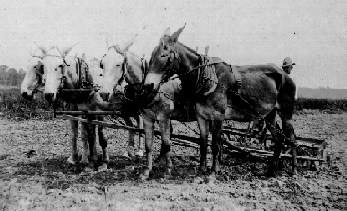
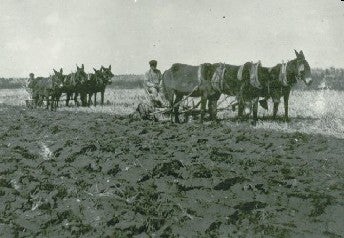
Image from the UT Institute of Texan Cultures at San Antonio, courtesy of J. Nagai Family
After establishing the colony in 1906, Kishi needed people to realize his plans for largescale farming. He returned to Japan in 1907 to search for men willing to work on his colony and came back to Texas with 16 men satisfied with working as a laborer or tenant farmer. Ensuring that a sufficient workforce would be able to support the colony in Texas, Kishi decided to bring along his family which included his four-year-old son, Taro, and his second wife, Fuji (Kobayashi) Kishi, as Taro's mother had died several years earlier. Kishi temporarily left his infant daughter with his father in Japan, deeming the trip unsafe for someone so young. The workers arrived at the colony in the winter of 1907-1908 and they immediately went to work preparing the land for planting in the spring. The laborers first made use of teams of mules to efficiently plow the land, then dug irrigation canals which fed water from the nearby Cow Bayou using steam-operated dredges, and finally constructed levees to ensure no water went to waste. At the same time that the fields were being prepared, laborers skilled in carpentry helped build and repair the various colony structures ranging from barns to houses. By the time spring rolled over, everything had successfully come together allowing for farming to begin. [1]
The Japanese colonists can be categorized into two groups: sharecroppers to whom Kishi would supply sufficient materials to have successful farmland on their own in exchange for half their crops, or tenants or farmhands who each worked on 200 acres of the Kishi Colony’s main fields in the first year. Together, the early fields consisted of 1,600 acres. With the exception of the colony blacksmith who worked year-round, the colonists put aside their other skills and focused on farming. [1]
After a lot of grueling work, the colony had its first harvest of 15,753 200-pound sacks of rice in spring 1908 and sold them for a total of $47,000. [1] Sakachi A. Kondo of Fannett remembers the stories his father Sataro told him of the effort put into getting the first crops. According to Kondo, “They plowed all winter long” and “used a single-blade sulky plow pulled by three mules or a two-blade gang plow with four mules.” “The drill and binder too were pulled by mules,” said Kondo. [3]
The news of the colony’s success was relayed back to friends and family in Japan, convincing many to join the colony in the following year, which not only led to the colony’s population doubling to 40, but also to an immediate increase in farming prospects. Most of the new arrivals departed from Niigata Prefecture including four women, three children, and Hachitaro Kishi, Kichimatsu Kishi’s younger brother. [1]
Following the successful farming, Kishi shifted his efforts towards supporting the Japanese residents and farm-owners. To do this he joined the Japanese Association of Texas on the 14th of November, 1908. He further cemented his place as a trustee of the association. Other trustees included Seito Saibara of Webster, Sahei Imura of Alvin, and Sadamatsu Takeda of Mykawa. [2]
The Kishi Farm retained its success for the next eight or so years as the extent of land owned by Kichimatsu Kishi continuously expanded. This also came with the growth of the colony’s population itself, a result of immigration and new births. One group of immigrants consisted of Toraichi Kishi and his wife as well as four new brides who came to marry colonists. [1]
The men in the colony are divided between workers who left family behind to provide for them, or the young and unmarried who came to establish their future. As time passed, the young reached the age of marriage. This is seen in the spree of marrage soon following the arrival of the brides as two occurred February 2, 1912. Two couples, Hachitaro Kishi and Miss Moto Sakai as well as Junzo Nagai registered their marriage at the Orange County Courthouse that day. Upon their return to the farm, their friends gathered to throw a Japanese-style feast to bless the couples’ marriage. A year later, on the 12th of April, 1913, Shunji Hasegawa married Miss Tomo Morohashi. [2]
Sataro Kondo was one of the men who was already married and decided to leave his family behind at first due to uncertainty surrounding the Kishi Colony. After working for four years and seeing the success of the colony, Kondo confidently welcomed his wife, Fumi, and their three children to join his life in Texas. The family continued to expand as Fumi Kondo eventually gave birth to six more children. [1] While nine children might seem like a lot as seen through the lens of the modern day, families this size were actually quite common among the Japanese Texans.
Large families meant that women spent large portions of their day taking care of their children. This meant that women would only work the fields when necessary. The work of the women did not end at raising children, however: they were also in charge of looking after their homes as well as cooking for the unmarried men as men far outnumbered the women. Harvest seasons proved to be the most difficult for the women as outside workers including Mexican Americans, Afro-Americans, Anglo-Americans and later even some French Americans were hired. Women were tasked with preparing different meals for the Japanese and hired workers (often new ethnic meals) in an effort to keep all the men productive. [1]
The early 20th century was a time in which discrimination occurred frequently towards Afro-Americans and the Klu Klux Klan spread its influence throughout Texas. Nearby in Orange County, the KKK had established themselves, but had delivered Kishi a letter that they had no interest towards the Kishi colony and its colonists. [2] However, this did not mean that racism towards Afro-Americans was not present. One instance in which the Afro-American workers in the Kishi Colony experienced racism was when someone fired a shotgun at their living quarters. Deeming this unacceptable, Kishi purchased a revolver, approached his neighbors, displayed his firearm and told them “if anyone harms his workers, he would use this.” No one bothered his workers again.
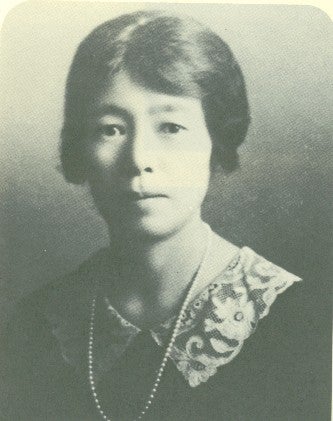
The most prominent woman in the Kishi Colony was none other than Kichimatsu Kishi’s Wife, Fuji. After joining her husband in Texas, Fuji’s life shifted drastically. Elaborate coiffures, playing her cherished string instrument, the koto, and other luxuries became a thing of the past as Fuji left them behind to commit to her Texas journey. Fuji became well-acquainted with a new instrument, the Singer sewing machine, replacing the comfort the koto had brought her. [1]
However, even though she left the land of Japan, she carried its spirit with her and passed it on to her children. She made sure the Kishi family conversed in Japanese. During the day, she made sure to spend time teaching them Japanese reading and writing. At night, Fuji would recount the same Japanese fairy tales her mother once told her. Kichimatsu Kishi, who was proficient in both English and Japanese, wanted his children to spend time learning both languages like he had. Like many of the other children in US immigrant communities, the Kishi children learned to embrace both their native and home cultures. [1]
However, many of the children faced a much harder challenge than accustoming to a blend of cultures: reaching adulthood. A third of those buried in the Kishi Colony cemetery were children or young infants. Nevertheless, the challenge of surviving was not something unique to the Kishi Colony’s children. Many adults died over the span of the early colony. Tomihachi Toba, a 24-year-old laborer on the farm, passed away in 1910 while steering a disk harrow after falling from it. The arrival of hurricanes was common in the part of Texas in which the Kishi Colony resided, bringing casualy as they swept through. In 1914, a hurricane hit causing a creek to overflow which unfortunately led to the drowning of a Japanese man. A year later, another hurricane hit, flooding the colony again. Taro Kishi, Kichimatsu’s son, can still sharply remember familes assembling rafts out of boards nailed together to escape the threats of the flood. This time, however, the hurricane spared the lives of the inhabitants and instead took away one fifth of the colony’s rice crop. Similar loss of rice crops could be seen throughout Texas, lowering supply and increasing marketplace prices. This meant that the Kishi farm was soon able to recover from the losses brought upon by the hurricane. [1]

The "Old Farm" was the original site of Kishi's residence until it burned down in 1923.
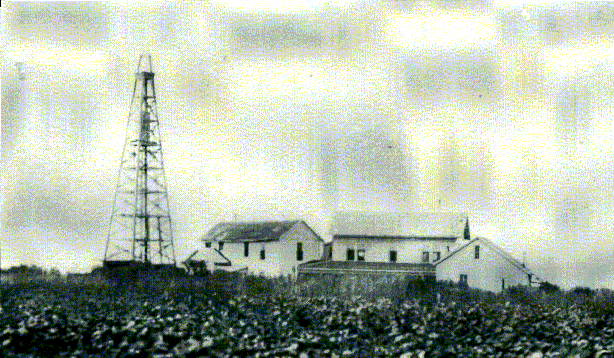
The "Yellow House" became the Kishi residence after the fire in 1923. Contrary to its oil well-like appearance, the derrick was used to drill over 700 feet to very good quality fresh water. In this picture, the camphor and pine trees are not yet evident. An irrigation canal was later built between this viewpoint and the houses.
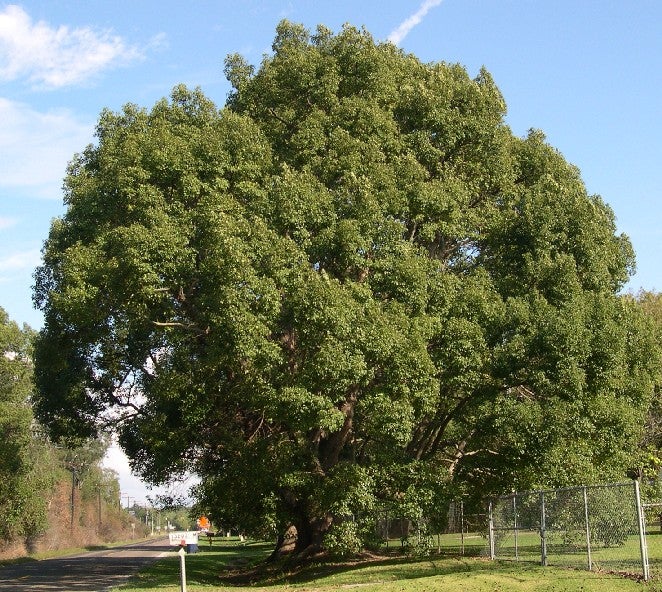
A legacy left behind by Kichimatsu Kishi was the introduction of camphor laurel trees during the early period of the colony after bringing back saplings from a trip to Japan in 1911-12. The planting of the trees were well appreciated by other local citizens, who described them as “a decorative contribution to the Texas coast.” One was planted in front of the “yellow house,” originally the home of Kyojiro Moriyama and his wife and later becoming the Kishi residence after a fire burnt down a large part of the old Kishi residence. Toraichi Kishi’s house at the southern border of the colony also became home to a few camphor laurel trees. One of the specimen grew to be the largest registered by the Texas Forest Service. While planting the trees, Toraichi once remarked to his nine-year-old cousin Taro Kishi that “things like that live long after human life is gone.” His words remain true to this day. Driving down FM 105, one would be able to still see the oval-shaped, vibrant dark green leaves of the trees extruding magnificently from the sides. [2]
References
1. Walls, Thomas K. (1987) The Japanese Texans, San Antonio: University of Texas, Institute of Texan Cultures at San Antonio, 1996.
2. Orii, K. (1983) Kichimatsu Kishi’s Japanese Colony at Terry, Texas, Department of History, University of Pennsylvania.
3. Wingate, G. (1974) “The Kishi Colony,” in The Folklore of Texan Cultures, Abernethy, F. E., ed. The Encino Press, Austin.
